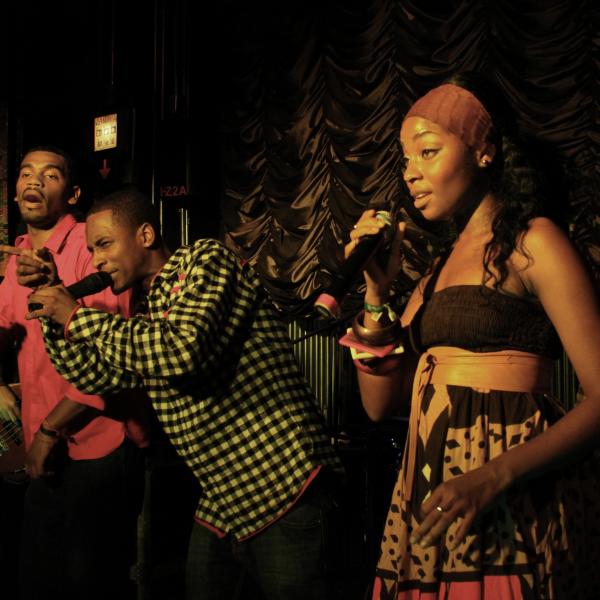Musical performances in the ethnographic setting, the karaoke room and the black church take center stage in the interdisciplinary “Embodying Intimacy: New Work in Voice and Performance” symposium, writes performance scholar Paige McGinley.
An early 20th-century ethnographic recording, a karaoke night somewhere in suburbia, worshipers speaking in tongues: these diverse happenings are just a few of the objects of study taken up by Roshanak Kheshti, Karen Tongson and Ashon Crawley. Though these three scholars work in various intellectual traditions — anthropology, religious studies, queer theory — their research converges in the interdisciplinary fields of sound studies and performance studies, the focus of the “Embodying Intimacy” symposium taking place February 8–9.
Kheshti, Tongson and Crawley will share their latest research during the two-day symposium, which is sponsored by the Race and Popular Music Initiative of American Culture Studies and grows out of a working group in Voice and Sexuality Studies that has been supported by the Center for the Humanities since 2016. The symposium’s theme and its selected guests emerged from this multiyear conversation: what people, we asked ourselves, would we like to have “at the table” with us? What scholars had particularly exciting work to share with our colleagues and students in music, performing arts, African and African American studies, religious studies and women’s, gender, and sexuality studies? How might we better theorize practices of listening and whose work offers us bold new models for doing so?
Kheshti, Tongson and Crawley have taken up these questions and related ones in their earlier work. In his 2016 book Blackpentecostal Breath: The Aesthetics of Possibility, Crawley explores the tarrying, whooping and speaking in tongues that characterize Pentecostal worship, suggesting that such modalities of breathing together offer radical possibilities for ethics, politics and sociality. The possibilities of being together differently are also explored by Tongson in her 2011 Relocations: Queer Suburban Imaginaries, which revels in queer of color sociability and spatial formations that challenge the presumed normativity of the suburbs — an automobility that always has a soundtrack. Kheshti also engages the imaginary in her 2015 Modernity’s Ear: Listening to Race and Gender in World Music, developing a theory of the “aural imaginary” that illuminates the racializing and gendering practices of listening that organize the world culture music industry.
The new work that Kheshti, Crawley and Tongson will share at “Embodying Intimacy” — including Crawley’s research on the Hammond B-3 organ and the sound of black Christianity, Kheshti’s illumination of Zora Neale Hurston’s unsettling of musical ethnography, and Tongson’s explication of the queerness of karaoke — all situate the production and consumption of sound as a fundamentally embodied activity. Though these sound performances in the ethnographic scenario, the karaoke room and the black church are mediated by new technologies and modes of circulation, they are crafted and received in a scene of intimacy. The nature of this intimacy — this embodied sociability that both assembles and dissembles — is a guiding inquiry in the work of this symposium.



